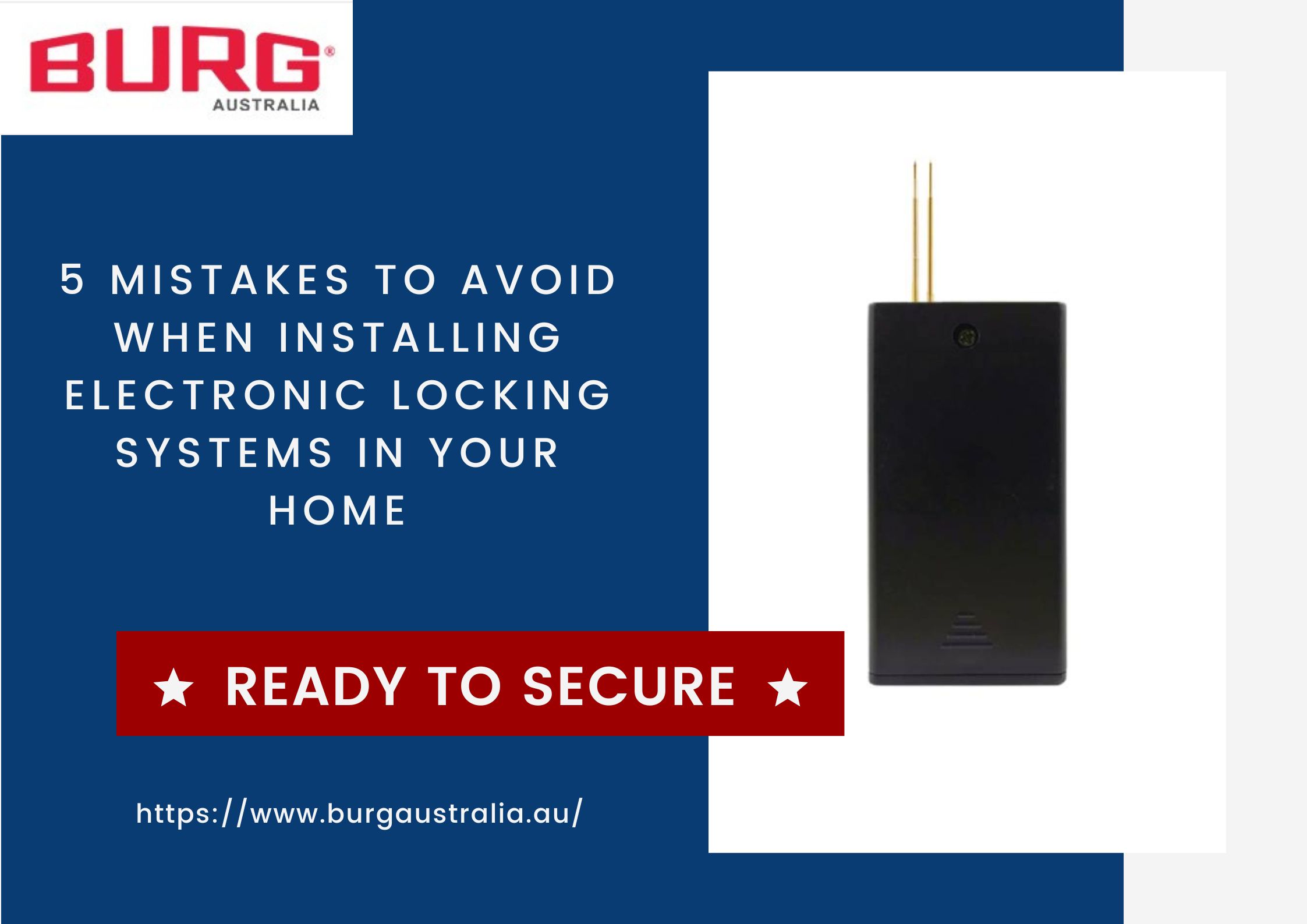
As electronic locking systems become more popular for enhancing home security, many homeowners are opting for DIY installation.
While it can be a rewarding project, improper installation can lead to security vulnerabilities that may compromise your home’s safety.
Whether you’re upgrading from traditional locks or installing a smart lock for the first time, avoiding common mistakes can make all the difference. In this article, we’ll walk you through five key mistakes to avoid when installing electronic locking systems in your home.
1. Not Checking Compatibility with Existing Doors
One of the first things you should do before purchasing an electronic lock is to ensure it’s compatible with your existing doors. Not all locks fit all door types, and some systems may require specific thickness, materials, or backset measurements. If you overlook this, you may end up with a system that doesn’t fit or is difficult to install.
Tip: Measure your door and check the lock’s specifications before purchasing. Many manufacturers offer compatibility guides, so make sure to follow them closely. If you have a unique door type, such as a sliding or double door, look for a system designed for those specific needs.
2. Ignoring Power Source Requirements
Electronic locking systems often run on batteries or need a constant power supply. Some models use rechargeable batteries, while others rely on standard AA or CR123 batteries. Failing to check how the lock is powered could lead to installation problems or a system that runs out of juice too quickly.
Tip: Double-check the power requirements of your chosen electronic lock. If you go for a model that uses batteries, ensure they’re easy to replace or recharge. Additionally, consider investing in a system with a low-battery indicator, so you’re never left locked out unexpectedly.
3. Skipping Professional Help for Complex Installations
While many electronic locking systems are designed for DIY installation, some models can be complex and may require professional installation. For example, locks that integrate with home automation systems, biometric scanners, or access control panels might require specialised wiring or calibration.
Tip: If you’re unsure about the installation process, or if the system requires advanced features like network integration, it’s worth calling in a professional. Poor installation can lead to malfunctioning locks or, worse, leave your home vulnerable to intruders.
4. Overlooking Security Features
One of the main reasons to install an electronic locking system is to increase the security of your home. However, many people make the mistake of focusing only on the lock’s convenience features, such as remote access or mobile app integration, and overlook security functions like encryption, tamper alarms, and audit trails.
Tip: Make sure your electronic lock includes security features such as end-to-end encryption to prevent hacking attempts, tamper detection sensors that alert you if someone tries to force open the door, and the ability to track and log access attempts. These features are crucial for enhancing your home’s safety.
5. Improperly Installing the Lock Mechanism
The lock mechanism is the heart of any electronic locking system, and improper installation can result in a lock that doesn’t function correctly or, even worse, is easy to bypass. Misaligning the deadbolt, drilling holes in the wrong spots, or not ensuring the system is securely mounted can all lead to issues down the line.
Tip: Follow the manufacturer’s instructions carefully and take your time during the installation process. Ensure that the lock is properly aligned and securely fixed in place. If your system includes a deadbolt, make sure it extends fully when engaged. Consider using a drill guide to prevent errors while drilling.
Final Thoughts
Installing an electronic locking system in your home can be a great way to boost security, but it’s important to approach the project with care. By avoiding these five common mistakes—checking compatibility, understanding power requirements, seeking professional help when necessary, prioritising security features, and ensuring proper installation—you’ll set yourself up for success.
If you’re unsure about any part of the process, don’t hesitate to consult the manufacturer’s instructions or hire a professional. For expert advice and assistance with installation, consider reaching out to specialists like Burg Australia, who offer professional services and guidance to ensure your system is securely installed and functioning optimally. Your home’s security is too important to leave to chance, and taking the time to do it right will give you peace of mind for years to come.







